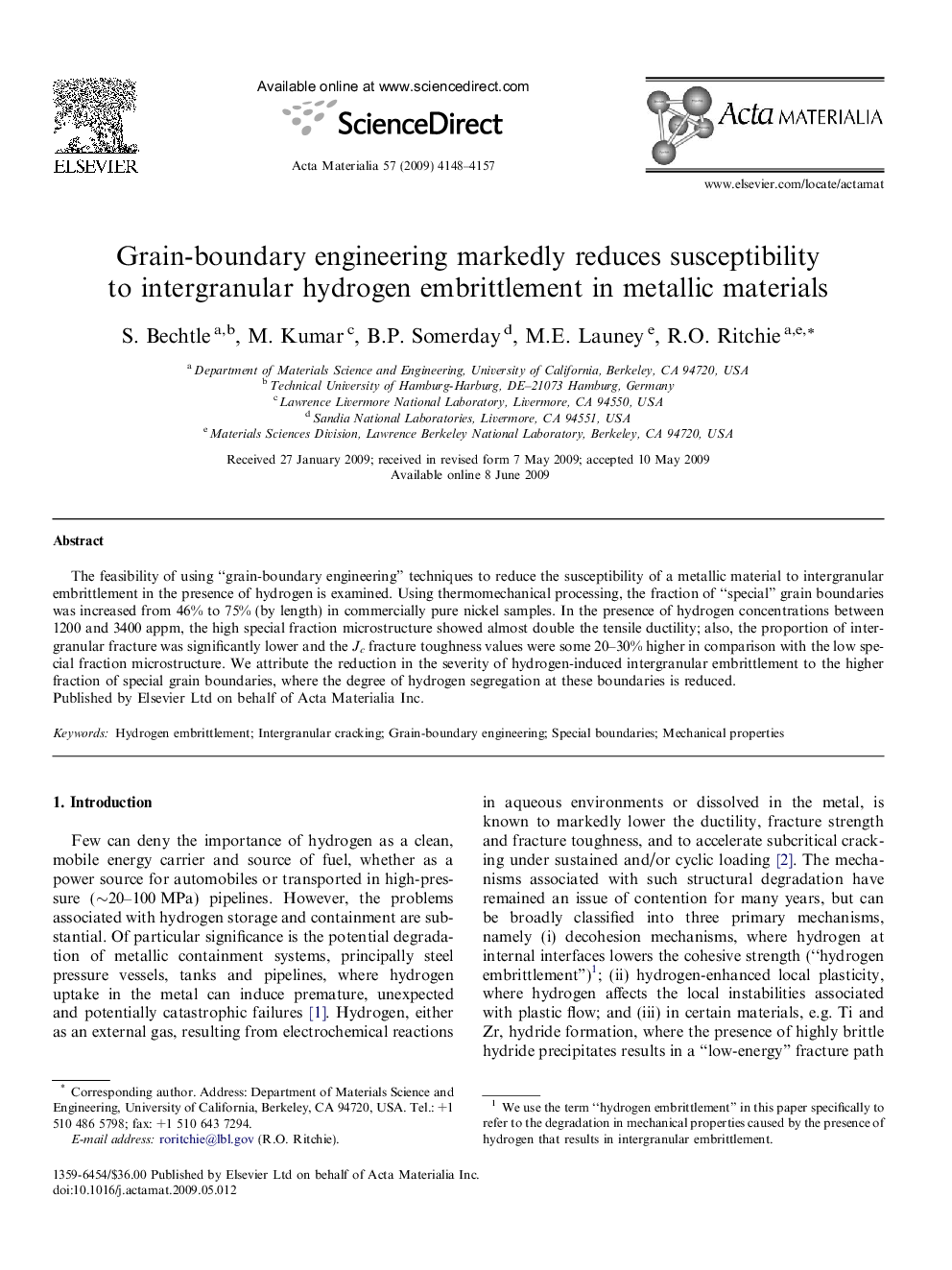| Article ID | Journal | Published Year | Pages | File Type |
|---|---|---|---|---|
| 1448059 | Acta Materialia | 2009 | 10 Pages |
The feasibility of using “grain-boundary engineering” techniques to reduce the susceptibility of a metallic material to intergranular embrittlement in the presence of hydrogen is examined. Using thermomechanical processing, the fraction of “special” grain boundaries was increased from 46% to 75% (by length) in commercially pure nickel samples. In the presence of hydrogen concentrations between 1200 and 3400 appm, the high special fraction microstructure showed almost double the tensile ductility; also, the proportion of intergranular fracture was significantly lower and the Jc fracture toughness values were some 20–30% higher in comparison with the low special fraction microstructure. We attribute the reduction in the severity of hydrogen-induced intergranular embrittlement to the higher fraction of special grain boundaries, where the degree of hydrogen segregation at these boundaries is reduced.
